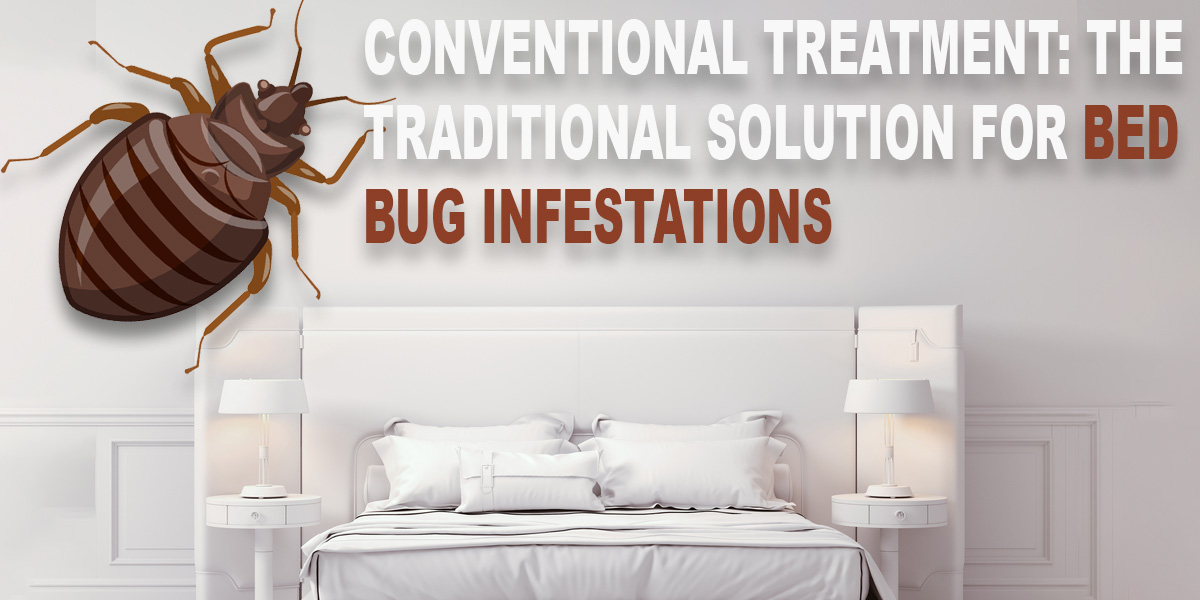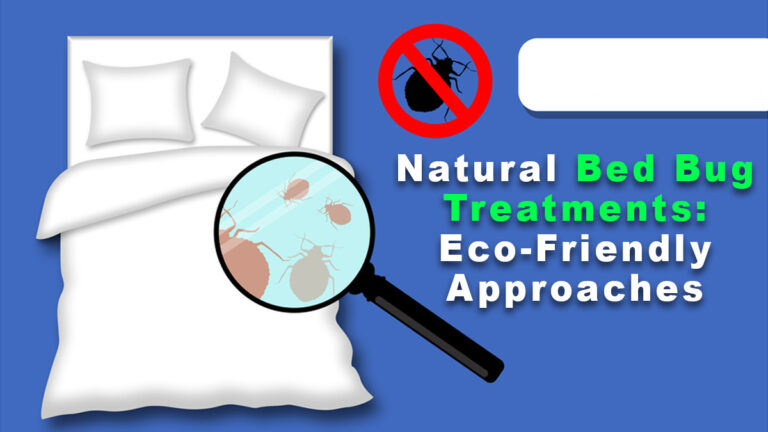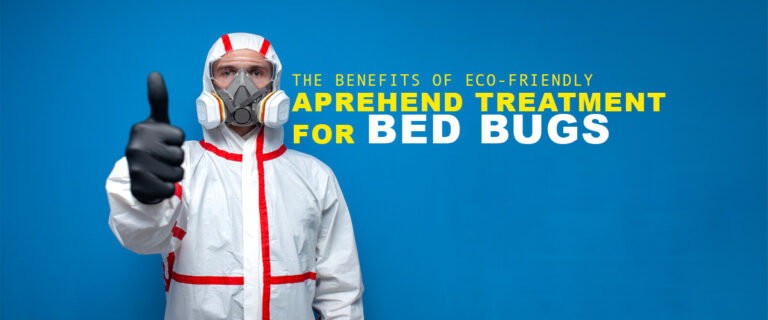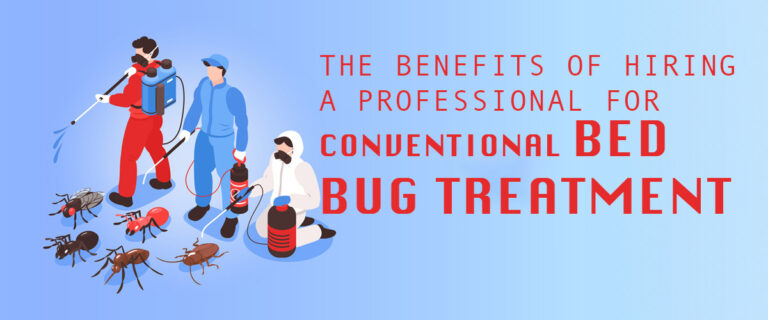Conventional Treatment: The Traditional Solution for Bed Bug Infestations
Bed bugs are tiny, flat insects that reside in beds on the bodies of humans and feed on their blood. They seek cover at night in cracks, crevices, or burrows during the day. Bed bugs can cause discomfort and distress in homes and other buildings. These pests are notoriously difficult to detect and even more challenging to get rid of. Bed bug infestations can cause itchy bites all over the body, anxiety, and loss of sleep. Effective treatment is essential to eliminate these pests and prevent future infestations.

What is Conventional Treatment?
This treatment involves using chemical insecticides that can kill bed bugs on contact. People typically use these insecticides in areas where bed bugs are commonly found, such as mattresses, box springs, and other furniture where they can breed. Moreover, the chemicals work by disrupting the bed bugs’ nervous systems, causing them to die within a few hours of contact.
There are several types of conventional treatment methods available for bed bug infestations. These include:
1. Residual sprays
People apply these insecticides to surfaces where bed bugs are present, and the chemicals can keep killing the pests for several weeks after the application.
2. Aerosol sprays
These insecticides are applied directly to bed bugs and can immediately relieve infestations.
3. Dust
In cracks and crevices, these chemicals are spread, which are renowned hiding places for bed bugs and can remain effective for several months. Moreover, professional pest control companies typically use these methods to ensure the best results.

How Conventional Treatment Works
This treatment targets the nervous systems of bed bugs. The insecticides disrupt the bed bugs’ ability to transmit nerve impulses, causing them to become paralyzed and eventually die. Moreover, this method of killing bed bugs effectively eliminates and can provide long-lasting relief from bed bug infestations.

Conventional Treatment Pros and Cons
Conventional treatment is a popular and traditional solution for bed bug infestations. While it has several advantages, this method has potential drawbacks or limitations.
Advantages of Conventional Treatment:
1. High effectiveness
Conventional therapy has been proven effective in removing bed bug infestations. Combining it with other treatment methods, such as heat treatment and steam cleaning, particularly increases its effectiveness.
2. Affordable
Professional pest control companies can perform this treatment, which is relatively affordable. Traditional medicine is typically more cost-effective than other treatment methods, such as heat treatment.
3. Long-lasting
This treatment can provide long-lasting results when done correctly. Preventing future infestations can significantly benefit from this.
Drawbacks/Limitations:
1. Chemical exposure
These bed bug elimination methods involve using pesticides and other chemicals that can harm humans and pets. When using these chemicals, following safety guidelines and instructions is essential.
2. Limited effectiveness for severe infestations
This method may not be enough to eradicate the problem of severe bed bug infestations. Additional treatment methods may be necessary, such as heat treatment or fumigation.
3. Resistance
Over time, bed bugs can develop resistance to certain pesticides used in this method. Eliminating bed bug infestations using these methods can become more challenging due to this.

Steam Treatment for Bed Bug Control
Steam treatment is another option for bed bug control. It involves using high-temperature steam to kill bed bugs and their eggs. Here are some advantages of steam treatment:
- It is chemical-free, making it a safer option for households with children and pets.
- It can go deeply into fissures and cracks, where bed bugs may hide.
- It’s effective against bed bugs and their eggs in one treatment.
Safety considerations for steam treatment include:
- Wearing protective gloves and eyewear.
- Using the appropriate equipment.
- Avoid contact with hot steam to prevent burns.

Causes of bed bug infestations
A frequent problem in homes, Bed bugs can quickly become a significant problem. Understanding the causes of bed bug infestations is essential for preventing and controlling these pests. It would help if you understood these typical causes of bed bug infestations. The following are the causes of bed bug infestations:
1. Travel
Bed bugs can hitchhike on clothing, luggage, and other personal belongings, and individuals can inadvertently transport them from one location to another.
2. Secondhand furniture
Infested furniture, particularly mattresses and sofas, can be a common source of bed bug infestations.
3. Multifamily housing
Bed bug infestations can quickly spread throughout apartment buildings and other multifamily dwellings.
4. Lack of awareness
Many must realize that bed bugs are a problem and may not take the necessary precautions to prevent infestations.

Insecticides for Bed Bug Control
Insecticides are a standard tool used in conventional bed bug treatment. For example, they target the nervous system of bed bugs, causing paralysis and death. Here are some insecticides commonly used for bed bug control:
1. Pyrethroids
People commonly use this type of insecticide for bed bug control. In other words, pyrethroids are designed to replicate the effects of pyrethrin, a natural insecticide found in chrysanthemum flowers.
2. Neonicotinoids
This insecticide targets insects’ nervous systems, causing paralysis and death. However, people commonly use it with other insecticides for bed bug control.
3. Insect growth regulators (IGRs)
IGRs disrupt the growth and development of bed bugs, preventing them from reaching maturity and reproducing.

Health Risks and Safety Considerations
Bed bug infestations can cause various health problems, including allergic reactions, skin irritation, and psychological distress. In addition, this method for bed bug control often involves using insecticides, which can pose health risks to humans and pets if misused.
Safety considerations when using conventional treatment methods for bed bug control include:
- Putting on safety gear, such as rubber gloves and masks, can help prevent exposure to hazardous materials.
- It was adequately ventilating treated areas.
- Keeping treated areas off-limits until insecticides have dried or dissipated
- Storing insecticides and equipment out of reach of children and pets

Environmental Impact of Conventional Treatment
This method for bed bug control often involves insecticides, which can have negative environmental impacts. These insecticides can harm non-target organisms, such as beneficial insects, wildlife, and pets. They can also contaminate soil, water sources, and air. Therefore, using these chemicals responsibly and minimizing their environmental impact is essential.
Best practices for minimizing environmental impact include:
- Using low-toxicity insecticides
- Applying insecticides only in affected areas
- Properly disposing of insecticide containers and waste
- Following label instructions and regulations.

The Bed Bug Solution
The bottom line is that bed insect infestations can be a severe problem for homeowners. While many treatment options are available, conventional treatment remains a popular and effective solution with the help of licensed bed bug exterminators. Furthermore, throughout this article, we have discussed what traditional medicine is, how it works, and its pros and cons. We have seen that while conventional treatment can be highly effective and affordable, it also involves pesticides and may not be as adequate for severe infestations.
Looking for professional assistance when dealing with bed bug infestations is imperative, as Experts in pest control have the knowledge and tools to identify and treat the problem correctly. Homeowners can successfully eliminate bed bugs and prevent future infestations by working with a professional pest control company and following safety guidelines.







